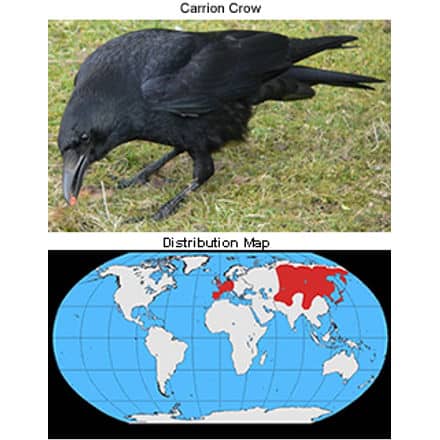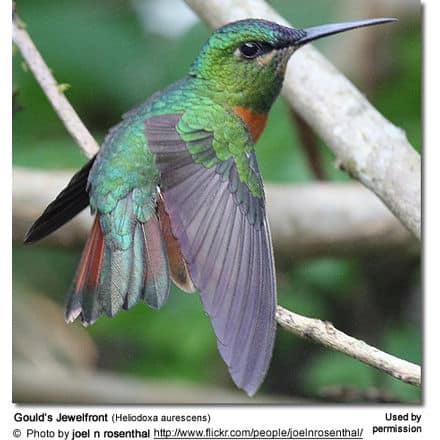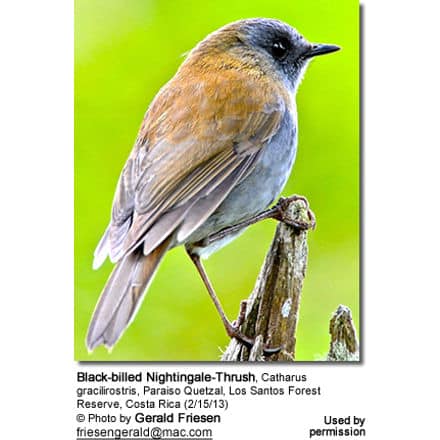Carrion Crow
The Carrion Crows (Corvus corone) can be distinguished from the Common Raven by its size (48–52 cm in length) and from the Hooded Crow by its black plumage, but there is frequent confusion between it and the Rook.
The beak of the Crow is stouter and in consequence looks shorter, and whereas in the adult Rook the nostrils are bare, those of the Crow are covered at all ages with bristle-like feathers.
Distribution:
This species breeds in western and central Europe, with an allied form or race C. c. orientalis (50-56 cm in length) occurring in eastern Asia.
The separation of these two populations is now believed to have taken place during the last ice age, with the closely allied Hooded Crow (now given species status) filling the gap between them.
Fertile hybrids occur along the boundary between these two forms indicating their close genetic relationship.

Description
The plumage of Carrion Crows is black with a green or purple sheen, but the gloss is much greener than that of the Rook. The bill, legs, and feet are also black.
Characteristics
The Rook is generally gregarious and the Crow solitary, but Rooks occasionally nest in isolated trees, and Crows may feed with Rooks; moreover, Crows are often sociable in winter roosts. The most distinctive feature is the voice. The rook has a high-pitched kaaa, but the Crow’s guttural, slightly vibrant, deeper croaked kraa is distinct from any note of the rook.
The Carrion Crow is noisy, perching on the top of a tree and calling three or four times in quick succession, with a slight pause between each series of croaks. The wing beats are slower, and more deliberate than those of the Rook.
Though an eater of dead animals of all kinds, the Carrion Crow will kill and eat any small animal it can catch, and take eggs. Crows are by nature scavengers, which is why they tend to frequent sites inhabited by humans to feed on their household waste.
Nesting / Breeding
The bulky stick nest is normally placed in a tall tree, but cliff ledges, old buildings, and pylons may be used. Nests are occasionally placed on or near the ground. The nest resembles that of the Common Raven but is less bulky.
The four to six brown-speckled blue eggs are incubated for 17-19 days by the female alone, who is fed by the male. The young fledge after 32-36 days.
It is not uncommon for an offspring from the previous years to stay around and help rear the new hatchlings. It will not, itself, take a mate but will instead search for food and assist the parents with feeding the young.


